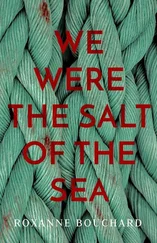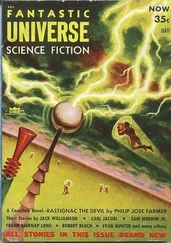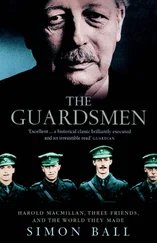On 19 thAugust 1961, in an attempt to try and calm the people of West Berlin and in order to demonstrate that the island city could rely on him, John F. Kennedy sent Vice President, Lyndon B. Johnson, to Berlin. Accompanying him was General Lucius D. Clay, who had masterminded the Berlin Airlift. One day later, 1,500 U.S. troops arrived in Berlin to strengthen the troops already stationed there.
In his letter of reply, Kennedy wrote to Willy Brandt: “As this brutal closure of the border is a clear admission of failure and political weakness, it obviously means a fundamental Soviet decision that could only be undone by war.” 30The western powers did not wish to risk a war and were forced to respect the Soviet Union’s sphere of influence.The division of Germany now seemed permanently complete. The crisis in Berlin, however, did not end with the building of the Berlin Wall. When American officials were prevented from crossing the border at Checkpoint Charlie, tanks were put in place at the border crossing. It was not long before Soviet tanks were brought in and the two sides found themselves in a face-off. The stand-off lasted 16 hours, finally – as agreed upon in secret negotiations – the Russian tanks moved back first, followed by the American tanks. 31It became clear to the world that America had a right to be in Berlin, but could not do anything about the division of the city. America’s promise for a safe and free Berlin was strengthened on 26 thJune 1963 when President Kennedy visited West Berlin. The Berliners cheered him as he assured them of his solidarity by saying “Ich bin ein Berliner.” 32
ESCAPCE AND ESCAPE AID AFTER THE BUILDING OF THE WALL
On 15 thAugust 1961, 19-year-old East German soldier, Conrad Schumann, jumped over the barbed wire into the West. Schumann, from Zschochau, Saxony, had been sent with his police unit to Berlin and was supposed to guard the border. Doubts about the sense of what he was doing at the border made him leap into freedom. Schumann was the first of over 2,500 border soldiers who evaded service on the border (thus potentially having to shoot at their compatriots) by fleeing to the West. 33
Twelve days after the construction of the Wall began, the first fatal shots were fired at the border. In the afternoon of 24 August 1961, 24-year-old Günter Litfin attempted to flee to West Berlin via the S-Bahn line near the Charité hospital to West Berlin. 34Litfin lived and worked in West Berlin and had been visiting his family in the East. He was shocked to find his way back to the West suddenly blocked. He began to look for a way to get back home. Through a barrage of fire, the border guards tried to dissuade the defenceless swimmer from his intention, then they aimed at his head. He was hit and disappeared under the water. A little while later, he was pulled from the water – dead. Günter Litfin was the first victim to be shot at the border. He was, however, not the last. Until the fall of the Wall, refugees tried again and again to overcome the barriers, despite the deadly threat. 35
Citizens from West Berlin were still permitted to enter East Berlin in the days immediately after the Wall was built. Many took this opportunity to smuggle friends and relatives back over the border using West Berlin papers and passports. Passes for West Berliners visiting the East were made obligatory on 23 rdAugust.
This rule was made obsolete on 25 thAugust after the Allies and West Berlin Senate refused to set up GDR permit offices. There was no further direct contact between citizens in the East and the West until the first border-pass agreement was made in December 1963. Only those in possession of a West German passport and foreigners could cross the border – or refugees who used forged papers. Others escaped to West Berlin via sewage systems – until the sewers were also blocked up with metal bars. But imagination in finding escape routes knew no bounds. 36Holes and weak points were constantly searched for. Refugees disguised as foreigners took the interzonal train to ferries bound to Scandinavia. Cars were converted, people concealed in cases, diplomats won over to help with escape attempts, paths made over East Europe and hot air balloons built.
The digging of escape tunnels under the border fortifications was spectacular. 37However, of around 70 tunnel projects, only a quarter were successfully used. There were also arrests and fatalities among the escape helpers. For each escape route discovered, measures were taken to increase security and perfect the border installations.

Memorial for Günter Litfin in Berlin-Mitte
© Archiv Bundesstiftung Aufarbeitung
PGRADING AND PERFECTING THE BORDER INSTALLATIONS 38
Until the mid-1960s, the inner-city Wall was built using concrete blocks and barbed wire. In the areas between West Berlin and the surrounding land, metal fencing was put up in place of the Wall. As time went on, a border strip was gradually introduced – it was introduced according to locality and the extent to which the GDR could monitor the area. The border strip was complemented by two, sometimes three, rows of barbed wire fencing, anti-tank barriers, trip wires, dogs on cable-runs and watch towers. In June 1963, a border area (at some points stretching hundreds of metres) was set up. Residents and visitors to this area were only allowed to pass with special permits. This began at the so-called “Hinterlandmauer” (interior wall), which bordered the death strip to the east and formed the actual border for GDR citizens.
Upgrading the Wall followed in the mid-1960s and was carried out according to detailed plans by the military. After the first and second generations of Wall, the third generation followed. The third generation Wall was made up of slabs of concrete and was 3.4-metres-high. “Grenzmauer 75” (Border Wall 75) followed in the mid-1970s. It was an L-shaped Wall made from steel reinforced concrete and was 3.6-metres-long. This type of Wall had been tested for its stability and insurmountability and served as the primary border installation facing the West.

Diagram showing the border fortifications
© BArch DVW 32 (Kommando der Grenztruppen)/112249, pag. 205.
The death strip was 15 to 150-metres-wide and was made up of varying security systems to prevent escape. It was built up from East to West until the end of the 1980s as follows: not far from the East facing “Hinterlandmauer” was a signal fence made up of many electrical wires. If it was touched, an alarm went off. At some points, the fence went half a metre into the ground to prevent people from crawling underneath it. It was lined with floodlights which lit up the death strip and a sand path that went right to the Wall itself. In this way, visibility was always good and the field of fire always visible. Immediately in front of the Wall was the motor vehicle barrier ditch, which was sloped and secured with concrete slabs in such a way that a vehicle would already be halted here. If it did reach the Wall, it would hit the concrete base of the Wall and stabilize it with its own weight. Along the top of the Wall itself was a round pipe which prevented people getting any kind of grip with their hands if they attempted to climb over. At certain weaker points along the border, guard dogs were also put on patrol. The dogs were tied to a wire which ran parallel to the signal fence and could move up and down the length of the wire.
Читать дальше














